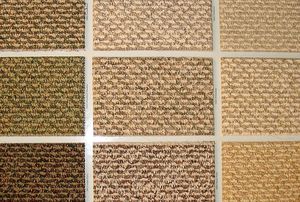There is nothing quite as distinguished as wall-to-wall Berber carpeting. Unlike other types of carpets, Berber is well-known for its uncut pile. Forming a loop, the yarn is interwoven also with contrasting color flecks to create a visually stunning display on the home’s floors. The downside of this textile floor covering is its uncanny ability to snag on virtually anything you drag across it: shoes, jewelry, Fluffy’s claws, junior’s rolling backpack and anything else that might hook into a loop. Rips and pulled threads are common. Not surprisingly, repairing Berber carpet is a must to maintain its gorgeous look.
Check your warranty! Repairing Berber carpet like a pro might just mean calling out the pros to do it. If the installation is relatively new and you still have a warranty on the install or the carpet, call in the manufacturer’s rep. The work may be done for free. If you try to fix the carpeting yourself, there is a good chance that you void the warranty and the installer has a lot of wiggle-room if you do end up calling out the pros.
Fluff the dents. Berber carpets do not bounce back quite as easily when crushed. The fibers tend to bend and stay in that position. If you are planning on moving the sofa from the northern wall to a western direction, be prepared to have a couple of ugly carpet dents. Occasionally the carpeting will bounce back on its own, especially if the sofa has not been sitting in that position for a very long time. Helping the carpet fibers bounce back manually is possible — if you proceed with caution. Use a cheap plastic fork to gently fluff the dented Berber. Do not use a regular dinner fork. Too much pressure can result in a snag. A cheap plastic fork is bound to break before damaging the carpeting.
Cut and glue snags. Snags fall under the heading of ‘when,’ not ‘if,’ after installation. It is virtually impossible to live in a home with Berber carpeting and not get snags. The most common culprit — right after family pets and chair legs — is the rotating vacuum cleaner brush. Do not procrastinate when dealing with a snag: it only gets worse and may lead to an entire row-tear if it is left alone! Use sharp fabric scissors and cut the torn strand down to the backing. Secure it in place with a dab of hot glue. Yes, it will create a minor indent in the carpet surface, but at least it won’t result in a noticeable tear.
Clean with care. The Berber Carpet Bible quickly dispels the myth of the virtually non-staining textile. While it is true that Berber does offer quite a bit of stain resistance, it is not Teflon. Fiber differences between wool and olefin, nylon and polyester require a targeted approach. Adding insult to injury, this type of textile floor covering is a lot more susceptible to oil retention than other carpets. Where the material does shine is in its unwillingness to soak up spills. Quick blotting and the judicious use of commercial carpet cleaning sprays — according to manufacturer directions, of course — can do away with most of the daily spills and drips. If there is an oily spill (think about the spilled salad dressing or the greasy footprint when coming in from the garage) it is best to call in a carpet cleaner who knows her Berber fibers.
Of course, the best defense is a good offense. Rather than repairing Berber carpet, why not prevent a lot of the problems in the first place? Place area rugs in high-traffic spots, use flat furniture coasters under pointy furniture legs and keep the family pet’s claws clipped.
Source
Berber Carpet Bible: “Professionally Cleaning Berber Carpet”
More by Sylvia Cochran
Carpet Buying 101
Green Floor Buying Guide
How to Remove Candle Wax Stains
